CAPE CANAVERAL, Fla. – Space Shuttle Discovery Lifts Off Launch Pad 39A In A Billowing Swirl Of Smoke





CAPE CANAVERAL, Fla. – Space shuttle Discovery lifts off Launch Pad 39A in a billowing swirl of smoke and steam at NASA’s Kennedy Space Center in Florida, beginning its final flight, the STS-133 mission. Launch to the International Space Station was at 4:53 p.m. EST.
Credit: NASA
More Posts from Ocrim1967 and Others










Ask Ethan: Is Spacetime Really A Fabric?
“I’d like somebody to finally acknowledge and admit that showing balls on a bed sheet doesn’t cut it as a picture of reality.”
Okay, I admit it: visualizing General Relativity as balls on a bedsheet doesn’t make a whole lot of sense. For one, if this is what gravity is supposed to be, what pulls the balls “down” onto the bedsheet? For another, if space is three dimensional, why are we talking about a 2D “fabric” of space? And for another, why do these lines curve away from the mass, rather than towards it?
It’s true: this visualization of General Relativity is highly flawed. But, believe it or not, all visualizations of General Relativity inherently have similar flaws. The reason is that space itself is not an observable thing! In Einstein’s theory, General Relativity provides the link between the matter and energy in the Universe, which determines the geometric curvature of spacetime, and how the rest of the matter and energy in the Universe moves in response to that. In this Universe, we can only measure matter and energy, not space itself. We can visualize it how we like, but all visualizations are inherently flawed.
Come get the story of how to make as much sense as possible out of the Universe we actually have.
The Summer Solstice Has Arrived!
This year’s summer solstice for the northern hemisphere arrives at 11:54 a.m. EDT, meaning today is the longest day of the year! The number of daylight hours varies by latitude, so our headquarters in Washington, D.C. will see 14 hours, 53 minutes, and 51 seconds of daylight. A lot can happen in that time! Let’s find out more.

If you’re spending the day outside, you might be in the path of our Earth Science Satellite Fleet (ESSF)! The fleet, made up of over a dozen Earth observation satellites, will pass over the continental United States about 37 times during today’s daylight hours.

These missions collect data on atmospheric chemistry and composition, cloud cover, ocean levels, climate, ecosystem dynamics, precipitation, and glacial movement, among other things. They aim to do everything from predicting extreme weather to helping informing the public and decision makers with the environment through GPS and imaging. Today, their sensors will send back over 200 gigabytes (GB) of data back to the ground by sunset.

As the sun sets today, the International Space Station (ISS) will be completing its 10th orbit since sunrise. In that time, a little more than 1 terabyte-worth of data will be downlinked to Earth.

That number encompasses data from ground communications, payloads, experiments, and control and navigation signals for the station. Approximately 330 GB of that TB is video, including live broadcasts and downlinks with news outlets. But as recently-returned astronaut Serena Auñón-Chancellor likes to point out, there’s still room for fun. The astronauts aboard the ISS can request YouTube videos or movies for what she likes to call “family movie night.”

Astronauts aboard the station also send back images—LOTS of them. Last year, astronauts sent back an average of 66,912 images per month! During today’s long hours of daylight, we expect the crew to send back about 656 images. But with Expedition 59 astronauts David Saint-Jacques (CSA), Anne McClain (NASA), and Oleg Kononenko (RKA) hard at work preparing to return to Earth on Monday, that number might be a little less.

Say you’re feeling left out after seeing the family dinners and want to join the crew. Would you have enough daylight to travel to the ISS and back on the longest day of the year? Yes, but only if you’re speedy enough, and plan your launch just right. With the current fastest launch-to-docking time of about six hours, you could complete two-and-a-half flights to the ISS today between sunrise and sunset.

When returning from orbit, it’s a longer ordeal. After the Expedition 59 trio arrives on Earth Monday night, they’ll have to travel from Kazakhstan to Houston to begin their post-flight activities. Their journey should take about 18 hours and 30 minutes, just a few hours longer than the hours of daylight we’ll see today.

Happy solstice! Make sure to tune in with us on Monday night for live coverage of the return of Expedition 59. Until then, enjoy the longest day of the year!
Make sure to follow us on Tumblr for your regular dose of space: http://nasa.tumblr.com.
Make Sure You Observe the Moon on October 20
On Saturday, October 20, NASA will host the ninth annual International Observe the Moon Night. One day each year, everyone on Earth is invited to observe and learn about the Moon together, and to celebrate the cultural and personal connections we all have with our nearest celestial neighbor.
There are a number of ways to celebrate. You can attend an event, host your own, or just look up! Here are 10 of our favorite ways to observe the Moon:
1. Look up

Image credit: NASA’s Scientific Visualization Studio/Ernie Wright
The simplest way to observe the Moon is simply to look up. The Moon is the brightest object in our night sky, the second brightest in our daytime sky and can be seen from all around the world — from the remote and dark Atacama Desert in Chile to the brightly lit streets of Tokyo. On October 20, the near side of the Moon, or the side facing Earth, will be about 80 percent illuminated, rising in the early evening.
See the Moon phase on October 20 or any other day of the year!
2. Peer through a telescope or binoculars

The Moon and Venus are great targets for binoculars. Image Credit: NASA/Bill Dunford
With some magnification help, you will be able to focus in on specific features on the Moon, like the Sea of Tranquility or the bright Copernicus Crater. Download our Moon maps for some guided observing on Saturday.
3. Photograph the Moon

Image credit: NASA/GSFC/ASU
Our Lunar Reconnaissance Orbiter (LRO) has taken more than 20 million images of the Moon, mapping it in stunning detail. You can see featured, captioned images on LRO’s camera website, like the one of Montes Carpatus seen here. And, of course, you can take your own photos from Earth. Check out our tips on photographing the Moon!
4. Take a virtual field trip

Image credit: NASA/JPL-Caltech
Plan a lunar hike with Moontrek. Moontrek is an interactive Moon map made using NASA data from our lunar spacecraft. Fly anywhere you’d like on the Moon, calculate the distance or the elevation of a mountain to plan your lunar hike, or layer attributes of the lunar surface and temperature. If you have a virtual reality headset, you can experience Moontrek in 3D.
5. Touch the topography

Image credit: NASA GSFC/Jacob Richardson
Observe the Moon through touch! If you have access to a 3D printer, you can peruse our library of 3D models and lunar landscapes. This model of the Apollo 11 landing site created by NASA scientist Jacob Richardson, is derived from LRO’s topographic data. Near the center, you can actually feel a tiny dot where astronauts Neil Armstrong and Buzz Aldrin left the Lunar Descent Module.
6. Make Moon art

Image credit: LPI/Andy Shaner
Enjoy artwork of the Moon and create your own! For messy fun, lunar crater paintings demonstrate how the lunar surface changes due to consistent meteorite impacts.
7. Relax on your couch

Image credit: NASA’s Scientific Visualization Studio/Ernie Wright
There are many movies that feature our nearest neighbor, from A Voyage to the Moon by George Melies, to Apollo 13, to the newly released First Man. You can also spend your evening with our lunar playlist on YouTube or this video gallery, learning about the Moon’s role in eclipses, looking at the Moon phases from the far side, and seeing the latest science portrayed in super high resolution. You’ll impress all of your friends with your knowledge of supermoons.
8. Listen to the Moon
Video credit: NASA’s Scientific Visualization Studio/Ernie Wright
Make a playlist of Moon songs. For inspiration, check out this list of lunar tunes. We also recommend LRO’s official music video, The Moon and More, featuring Javier Colon, season 1 winner of NBC’s “The Voice.” Or you can just watch this video featuring “Clair de Lune,” by French composer Claude Debussy, over and over.
9. See the Moon through the eyes of a spacecraft

Image credit: NASA/GSFC/MIT
Visible light is just one tool that we use to explore our universe. Our spacecraft contain many different types of instruments to analyze the Moon’s composition and environment. Review the Moon’s gravity field with data from the GRAIL spacecraft or decipher the maze of this slope map from the laser altimeter onboard LRO. This collection from LRO features images of the Moon’s temperature and topography. You can learn more about our different missions to explore the Moon here.
10. Continue your observations throughout the year

Image credit: NASA’s Scientific Visualization Studio/Ernie Wright
An important part of observing the Moon is to see how it changes over time. International Observe the Moon Night is the perfect time to start a Moon journal. See how the shape of the Moon changes over the course of a month, and keep track of where and what time it rises and sets. Observe the Moon all year long with these tools and techniques!
However you choose to celebrate International Observe the Moon Night, we want to hear about it! Register your participation and share your experiences on social media with #ObserveTheMoon or on our Facebook page. Happy observing!
Make sure to follow us on Tumblr for your regular dose of space: http://nasa.tumblr.com.

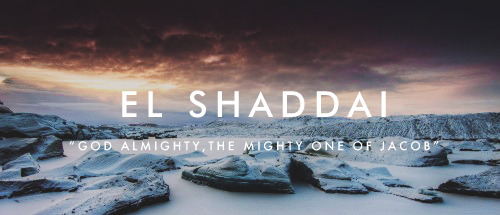
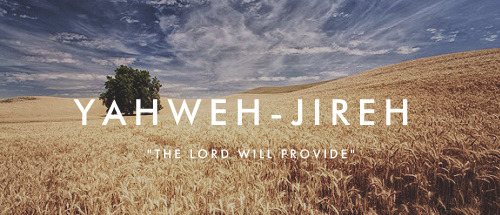







Recommended Resource: The Names of God by Ken Hemphill
How Do You Like Your Turkey? Home-Cooked or Rocket-Launched?

It’s Thanksgiving, which means that you’re probably thinking about food right now. And here at NASA, we have to think about food very seriously when we explore space!
Astronauts Need to Eat, Too!
Like for you on Earth, nutrition plays a key role in maintaining the health and optimal performance of the astronauts. The Space Food Systems team is required to meet the nutritional needs of each crew member while adhering to the requirements of limited storage space, limited preparation options, and the difficulties of eating without gravity.
Good food is necessary being comfortable on a mission a long way from home — especially for crewmembers who are on board for many months at a time. It’s important that the astronauts like the food they’re eating everyday, even given the preparation constraints!
Astronaut Food Has Not Always Been Appetizing

The early space programs were groundbreaking in a lot of ways — but not when it came to food. Like today, crumbs had to be prevented from scattering in microgravity and interfering with the instruments. Mercury astronauts had to endure bite-sized cubes, freeze-dried powders, and semi-liquids stuffed into aluminum tubes. The freeze-dried food were hard to rehydrate, squeezing the tubes was understandable unappetizing, and the food was generally considered to be, like spaceflight, a test of endurance.
However, over the years, packaging improved, which in turn enhanced food quality and choices. The Apollo astronauts were the first to have hot water, which made rehydrating foods easier and improved the food’s taste. And even the Space Shuttle astronauts had opportunities to design their own menus and choose foods commercially available on grocery store shelves.
The Wonders of Modern Space Food

Nowadays, astronauts on the International Space Station have the opportunity to sample a variety of foods and beverages prepared by the Space Food Systems team and decide which ones they prefer. They can add water to rehydratable products or eat products that are ready to eat off the shelf.
All the cooking and preparation has been done for them ahead of time because 1) they don’t have room for a kitchen to cook on the space station 2) they don’t have time to cook! The crewmembers are extremely occupied with station maintenance as well as scientific research on board, so meal times have to be streamlined as much as possible.
Instead of going grocery shopping, bulk overwrap bags (BOBs!) are packed into cargo transfer bags for delivery to the space station. Meal based packaging allows the astronauts to have entrees, side dishes, snacks, and desserts to choose from.
Taste in Space

The perception of taste changes in space. In microgravity, astronauts experience a fluid shift in their bodies, so the sensation is similar to eating with a headcold. The taste is muted so crewmembers prefer spicy foods or food with condiments to enhance the flavor.
We Can’t Buy Groceries, But We Can Grow Food!
Growing plants aboard the space station provides a unique opportunity to study how plants adapt to microgravity. Plants may serve as a food source for long term missions, so it’s critical to understand how spaceflight affects plant growth. Plus, having fresh food available in space can have a positive impact on astronauts’ moods!
Since 2002, the Lada greenhouse has been used to perform almost continuous plant growth experiments on the station. We have grown a vast variety of plants, including thale cress, swiss chard, cabbage, lettuce, and mizuna.

And in 2015, Expedition 44 members became the first American astronauts to eat plants grown in space when they munched on their harvest of Red Romaine.
Earthlings Can Eat Space Food, Too
To give you a clear idea of how diverse the selection is for astronauts on board the space station, two earthlings gave the astronaut menu a try for a full week. Besides mentioning once that hot sauce was needed, they fared pretty well! (The shrimp cocktail was a favorite.)
Space Technology for Food on Earth
Not only has our space food improved, but so has our ability measure food production on Earth. Weather that is too dry, too wet, too hot, or too cool can strongly affect a farmer’s ability to grow crops. We collaborated with the United States Agency for International Development to create a system for crop yield prediction based on satellite data: the GEOGLAM Crop Monitor for Early Warning.

This map measures the health, or “greenness” of vegetation based on how much red or near-infrared light the leaves reflect. Healthy vegetation reflects more infrared light and less visible light than stressed vegetation. As you can see from the map, a severe drought spread across southern Mexico to Panama in June to August of this year.
The Crop Monitor compiles different types of crop condition indicators — such as temperature, precipitation, and soil moisture — and shares them with 14 national and international partners to inform relief efforts.
Thanksgiving in Space
Space food has certainly come a long way from semi-liquids squeezed into aluminum tubes! This year, Expedition 57 crewmembers Commander Alexander Gerst and Flight Engineer Serena M. Auñón-Chancellor are looking forward to enjoying a Thanksgiving meal that probably sounds pretty familiar to you: turkey, stuffing, candied yams, and even spicy pound cakes!
Hungry for More?
If you can’t get enough of space food, tune into this episode of “Houston, We Have a Podcast” and explore the delicious science of astronaut mealtime with Takiyah Sirmons.
And whether you’re eating like a king or an astronaut, we wish everybody a happy and safe Thanksgiving!


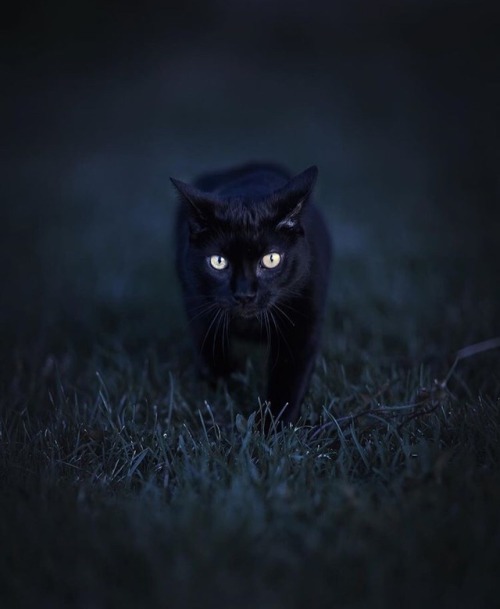

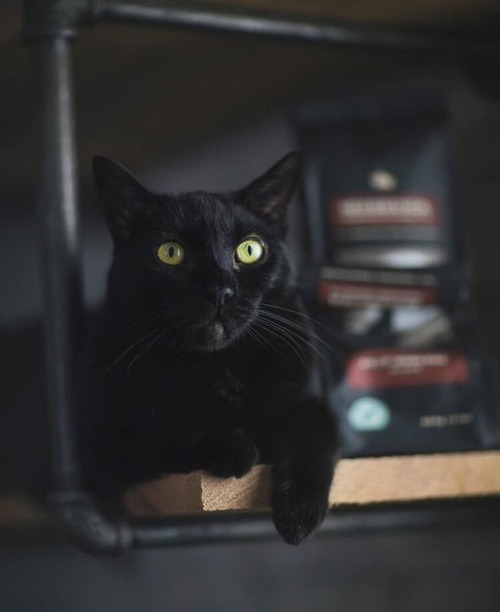
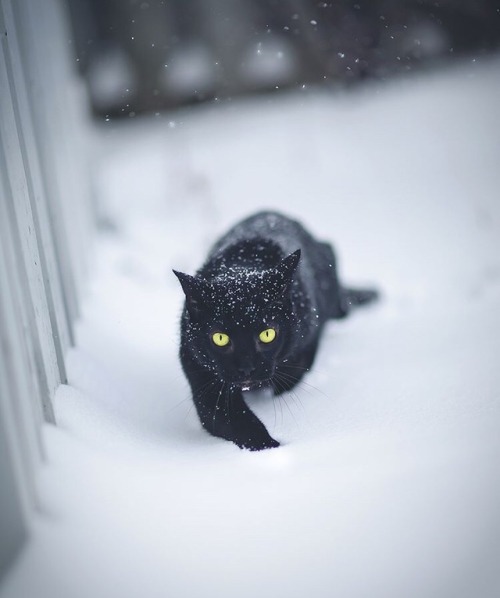



(Source)





Lunar eclipse 2019
Image credit: Dan Wery
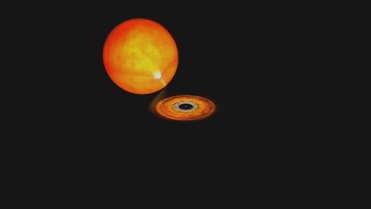

Millisecond Pulsar with Magnetic Field Structure
A pulsar is a rapidly rotating neutron star that emits pulses of radiation (such as X-rays and radio waves) at regular intervals. A millisecond pulsar is one with a rotational period between 1 and 10 milliseconds, or from 60,000 to 6,000 revolutions per minute. Pulsars form in supernova explosions, but even newborn pulsars don’t spin at millisecond speeds, and they gradually slow down with age. If, however, a pulsar is a member of a binary system with a normal star, gas transferred from the companion can spin up an old, slow pulsar to the millisecond range.
Credit: NASA, Dana Berry: Lead Animator Michael McClare (HTSI)
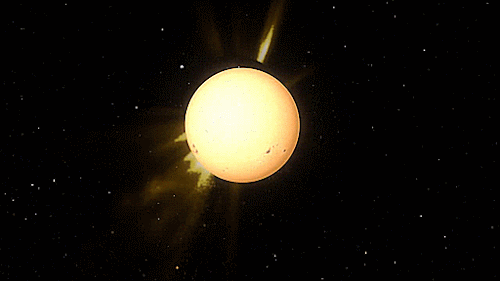


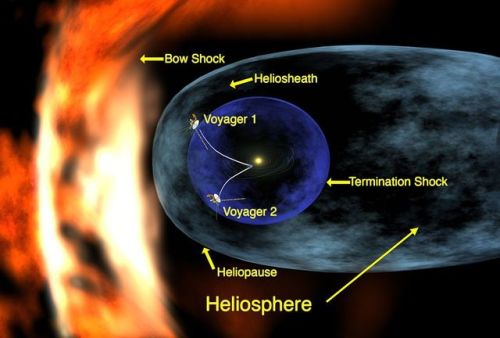
The heliosphere is the bubble-like region of space dominated by the Sun, which extends far beyond the orbit of Pluto. Plasma “blown” out from the Sun, known as the solar wind, creates and maintains this bubble against the outside pressure of the interstellar medium, the hydrogen and helium gas that permeates the Milky Way Galaxy. The solar wind flows outward from the Sun until encountering the termination shock, where motion slows abruptly. The Voyager spacecraft have explored the outer reaches of the heliosphere, passing through the shock and entering the heliosheath, a transitional region which is in turn bounded by the outermost edge of the heliosphere, called the heliopause. The shape of the heliosphere is controlled by the interstellar medium through which it is traveling, as well as the Sun and is not perfectly spherical. The limited data available and unexplored nature of these structures have resulted in many theories. The word “heliosphere” is said to have been coined by Alexander J. Dessler, who is credited with first use of the word in the scientific literature.
On September 12, 2013, NASA announced that Voyager 1 left the heliopause on August 25, 2012, when it measured a sudden increase in plasma density of about forty times. Because the heliopause marks one boundary between the Sun’s solar wind and the rest of the galaxy, a spacecraft such as Voyager 1 which has departed the heliosphere, can be said to have reached interstellar space. source
6 Ways NASA Technology Makes You Healthier
An important part of our mission is keeping astronauts strong and healthy during stays in space, but did you know that our technology also helps keep you healthy? And the origins of these space innovations aren’t always what you’d expect.
As we release the latest edition of NASA Spinoff, our yearly publication that celebrates all the ways NASA technology benefits us here on Earth, let’s look at some ways NASA is improving wellness for astronauts—and everyone else.
1. Weightless weight-lifting

Without gravity to work against, astronauts lose bone and muscle mass in space. To fight it, they work out regularly. But to get them a good burn, we had to get creative. After all, pumping iron doesn’t do much good when the weights float.
The solution? Elastic resistance. Inventor Paul Francis was already working on a portable home gym that relied on spiral-shaped springs made of an elastic material. He thought the same idea would work on the space station and after additional development and extensive testing, we agreed.
Our Interim Resistive Exercise Device launched in 2000 to help keep astronauts fit. And Francis’ original plan took off too. The technology perfected for NASA is at the heart of the Bowflex Revolution as well as a new line of handheld devices called OYO DoubleFlex, both of which enable an intensive—and extensive—workout, right at home.
2. Polymer coating keeps hearts beating

A key ingredient in a lifesaving treatment for many patients with congestive heart failure is made from a material a NASA researcher stumbled upon while working on a supersonic jet in the 1990s.
Today, a special kind of pacemaker that helps synchronize the left and right sides of the heart utilizes the unique substance known as LaRC-SI. The strong material can be cast extremely thin, which makes it easier to insert in the tightly twisted veins of the heart, and because it insulates so well, the pacemaker’s electric pulses go exactly where they should.
Since it was approved by the FDA in 2009, the device has been implanted hundreds of thousands of times.
3. Sutures strong enough for interplanetary transport

Many people mistakenly think we created Teflon. Not true: DuPont invented the unique polymer in 1938. But an innovative new way to use the material was developed to help us transport samples back from Mars and now aids in stitching up surgery patients.
Our scientists would love to get pristine Martian samples into our labs for more advanced testing. One complicating factor? The red dust makes it hard to get a clean seal on the sample container. That means the sample could get contaminated on its way back to Earth.
The team building the cannister had an idea, but they needed a material with very specific properties to make it work. They decided to use Polytetrafluoroethylene (that’s the scientific name for Teflon), which works really well in space.
The material we commonly recognize as Teflon starts as a powder, and to transform it into a nonstick coating, the powder gets processed a certain way. But process it differently, and you can get all kinds of different results.
For our Mars sample return cannister prototype, the powder was compressed at high pressures into a block, which was then forced through an extruder. (Imagine pressing playdough through a mold). It had never been done before, but the end result was durable, flexible and extremely thin: exactly what we needed.
And since the material can be implanted safely in the human body—it was also perfect as super strong sutures for after surgery.
4. Plant pots that clean the air

It may surprise you, but the most polluted air you breathe is likely the air inside your home and office. That’s especially true these days with energy-efficient insulation: the hot air gets sealed in, but so do any toxins coming off the paint, furniture, cooking gas, etc.
This was a problem NASA began worrying about decades ago, when we started planning for long duration space missions. After all, there’s no environment more insulated than a spaceship flying through the vacuum of space.
On Earth, plants are a big part of the “life support” system cleaning our air, so we wondered if they could do the same indoors or in space.
The results from extensive research surprised us: we learned the most important air scrubbing happens not through a plant’s leaves, but around its roots. And now you can get the cleanest air out of your houseplants by using a special plant pot, available online, developed with that finding in mind: it maximizes air flow through the soil, multiplying the plant’s ability to clean your air.
5. Gas sensor detects pollution from overhead

Although this next innovation wasn’t created with pollution in mind, it’s now helping keep an eye on one of the biggest greenhouse gasses: methane.
We created this tiny methane “sniffer” to help us look for signs of life on Mars. On Earth, the biggest source of methane is actually bacteria, so when one of our telescopes on the ground caught a glimpse of the gas on Mars, we knew we needed to take a closer look.
We sent this new, extremely sensitive sensor on the Curiosity Rover, but we knew it could also be put to good use here on our home planet. We adapted it, and today it gets mounted on drones and cars to quickly and accurately detect gas leaks and methane emissions from pipelines, oil wells and more.
The sensor can also be used to better study emissions from swamps and other natural sources, to better understand and perhaps mitigate their effects on climate change.
6. DNA “paint” highlights cellular damage

There’s been a lot of news lately about DNA editing: can genes be changed safely to make people healthier? Should they be?
As scientists and ethicists tackle these big questions, they need to be sure they know exactly what’s changing in the genome when they use the editing tools that already exist.
Well, thanks to a tool NASA helped create, we can actually highlight any abnormalities in the genetic code with special fluorescent “paint.”
But that’s not all the “paint” can do. We actually created it to better understand any genetic damage our astronauts incurred during their time in space, where radiation levels are far higher than on Earth. Down here, it could help do the same. For example, it can help doctors select the right cancer treatment by identifying the exact mutation in cancer cells.
You can learn more about all these innovations, and dozens more, in the 2019 edition of NASA Spinoff. Read it online or request a limited quantity print copy and we’ll mail it to you!
-
 acollectouritmonnos liked this · 1 year ago
acollectouritmonnos liked this · 1 year ago -
 jessica-hoot723043-blog liked this · 3 years ago
jessica-hoot723043-blog liked this · 3 years ago -
 ssasha liked this · 5 years ago
ssasha liked this · 5 years ago -
 sapph11c reblogged this · 5 years ago
sapph11c reblogged this · 5 years ago -
 ulala reblogged this · 6 years ago
ulala reblogged this · 6 years ago -
 einstthematics-blog reblogged this · 6 years ago
einstthematics-blog reblogged this · 6 years ago -
 greeklyuniverse liked this · 6 years ago
greeklyuniverse liked this · 6 years ago -
 navybluetriangles liked this · 6 years ago
navybluetriangles liked this · 6 years ago -
 knaveofmogadore reblogged this · 6 years ago
knaveofmogadore reblogged this · 6 years ago -
 seeme64 liked this · 6 years ago
seeme64 liked this · 6 years ago -
 blk93kng liked this · 6 years ago
blk93kng liked this · 6 years ago -
 pamelacomaneci liked this · 6 years ago
pamelacomaneci liked this · 6 years ago -
 statueinthestone liked this · 6 years ago
statueinthestone liked this · 6 years ago -
 mermadesings reblogged this · 6 years ago
mermadesings reblogged this · 6 years ago -
 vulpusrex reblogged this · 6 years ago
vulpusrex reblogged this · 6 years ago -
 dergelbebaer liked this · 6 years ago
dergelbebaer liked this · 6 years ago -
 fortunatelycreative reblogged this · 6 years ago
fortunatelycreative reblogged this · 6 years ago -
 fortunatelycreative liked this · 6 years ago
fortunatelycreative liked this · 6 years ago -
 1terabyte reblogged this · 6 years ago
1terabyte reblogged this · 6 years ago -
 cadisettevolterialzatiotto reblogged this · 6 years ago
cadisettevolterialzatiotto reblogged this · 6 years ago -
 milkywayrollercoaster liked this · 6 years ago
milkywayrollercoaster liked this · 6 years ago